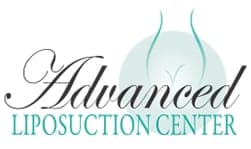Plastic Surgery Pittsburgh Post-op Care
How long is the typical recovery time for a modern, minimally invasive liposuction?

You’ve mentioned that patients return to work after 3 days or so. How about strenuous exercise? When are most patients cleared for full activity? Are there any lingering side effects?
Dr. Giraldo: Let’s see. Bruising and swelling are usually gone completely in less than 10 days, as long as they’re wearing their compression garment. After abdominal liposuction males and females both tend to get some genital bruising and swelling. I always make sure they understand that this is completely normal. It can look bad but is completely harmless, it’s just the effects of gravity on the collected fluid. I’ve never seen this go on longer than 2 weeks.
Side effects? Not really. I’d say the biggest side effect is post-lipo weight gain, but this is really about educating the patient properly. Liposuction is amazing but it’s not a miracle. Without lifestyle changes like a proper diet and exercise program weight gain is certainly possible. Liposuction, no matter how well it’s done, won’t make you “fat proof.” Most of my patients are pretty motivated, though, so this usually isn’t a problem.
Things like walking, elliptical machines, stationary bikes, and water aerobics. As for running, weight training, swimming, and things like construction work the times vary between patients. It’s on a case by case basis. It depends on how quickly the patient is healing, what they want to do, and what their overall health is like. I’ve had patients who were able to go back to lifting in as little as 3 weeks.
It takes longer for things to return completely back to normal. No pain, discomfort, soreness, bruising, or anything else. Maybe 6 to 12 weeks after an abdominal liposuction. Maybe 8 to 16 for the flanks or thighs. Necks and arms are quick, usually about 6 weeks.
There really aren’t “side effects” if it’s done right. I’ve seen liposuctions which don’t look right but that’s just because of over-suctioning. They took too much out. That’s the fault of the surgeon and is completely avoidable.
That’s a reasonable timetable, and recovery is pretty uneventful. Patients usually don’t want to hit the beach for a few weeks because of swelling and bruising. For vigorous twisting sports such as golf and basketball I usually have patients wait the full 8 weeks. It does vary, though. I’ve seen guys able to strength train after 4 weeks, no problem.
These procedures are excellent and there really aren’t any side effects. We’ll always err on the side of caution, though. When in doubt I tell my patients to wait longer. I tell them “look, this is an investment in yourself. You paid good money for this, so let’s wait a couple more weeks just to be absolutely, 100% sure.” They get the picture. In 12 years of practice I’ve never seen anyone get into trouble by trying to exercise too soon.
That being said we’ll always keep our eyes out for the big stuff, the very, very rare complications. Things like blood clot formation. This almost never happens, but it’s still something you look out for during follow-up appointments. It’s safety first, always.
What to eat during liposuction recovery?
During the recovery period after liposuction, it is important to prioritize a healthy and balanced diet to support healing and overall well-being. Here are some general dietary recommendations to consider during liposuction recovery:
- Stay Hydrated:
Drink plenty of water throughout the day to maintain proper hydration and support the healing process.
- Eat Nutrient-Dense Foods:
Consume a variety of fruits, vegetables, whole grains, lean proteins, and healthy fats to provide your body with essential nutrients and promote healing. Include foods rich in vitamins C, E, and K, as well as zinc and protein, which are beneficial for wound healing.
- Focus on Protein:
Protein is crucial for tissue repair and recovery. Include lean sources of protein such as poultry, fish, tofu, legumes, and low-fat dairy products in your meals.
- Incorporate Healthy Fats:
Include sources of healthy fats like avocados, nuts, seeds, olive oil, and fatty fish, which provide essential fatty acids and support the body’s inflammatory response.
- Consume Adequate Fiber:
Include fiber-rich foods like whole grains, fruits, vegetables, and legumes to support digestion and prevent constipation, which may be a common side effect of pain medications or reduced physical activity during recovery.
- Limit Sodium Intake:
Excessive sodium can lead to water retention and swelling. Avoid processed and high-sodium foods and focus on whole, fresh foods instead.
- Consider Anti-Inflammatory Foods:
Incorporate foods with anti-inflammatory properties, such as berries, leafy greens, turmeric, ginger, and green tea, which may help reduce inflammation and promote healing.
- Avoid Alcohol and Caffeine:
Limit or avoid alcohol and caffeine during the recovery period, as they can interfere with the healing process and hydration.
- Follow Post-Operative Instructions:
Your surgeon may provide specific dietary guidelines tailored to your individual needs and the extent of the liposuction procedure. Follow their instructions carefully to optimize your recovery.
When Is It Possible To Shower After Post Surgery? When Is It Safe?
When you should shower of the surgery depends on the type of procedure and your surgeon’s specific instructions, but generally here’s how it goes:
1. Showering: Most of the time light showers are allowed 24-48 hours after the surgery, as long as you do not submerge or directly expose your incisions, you should be fine. Gently pat them dry and cover them later!
2. Bathing and Soaking: Taking a normal bath, going to pools or hot tubs should be avoided until the incisions aren’t healed completely, which can take almost 2-6 weeks, depending on the treatment that was used.
Can I Travel After The Surgery? When Is It Possible?
Fortunately, travelling after the surgery is easily possible but a lot of it depends on the type of surgery you had, recovery process, and the mode of travel. If the procedure was minor, you can easily travel after a week or so, but more invasive surgeries, especially those that involved extensive incisions may require a weight of several weeks.
Usually, doctors will recommend waiting for at least 1 or 2 weeks for short card trips, and 4 to 6 weeks for longer flights because of risks of blood clots and swelling.
Are Emotional Changes After The Surgery Normal?
Yes, emotional changes after the surgeries are pretty normal, they are also known as the “post-op blues”, and here are some reasons why this might happen:
1. Anesthesia Effect: Anesthesia affects mood and cognitive functions, which can lead to feelings of confusion, or sadness after you wake up.
2. Physical Recovery: Pain, discomfort, irritation and limited mobility can highly affect your mood and can easily lead to emotions like sadness and frustration.
3. Hormonal Changes: Surgical procedures lead to hormonal fluctuations and it can have an impact on your mood as well.
